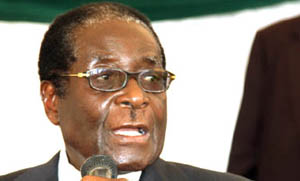Cross-border traders probe Indian market
line with the Government’s Look East Policy.
India, the world’s fourth largest economy, with a Gross Domestic Product of US$2,23 trillion, offers Zimbabweans huge trade opportunities.
Trade between Zimbabwe and India has grown steadily, particularly in the last few years.
Mumbai is India’s commercial capital.
CBTAZ president Mr Killer Zivhu is leading the delegation of Zimbabwean women.
He stressed in an interview that his association was keen to step up its export and import opportunities, not just in terms of finished products but also manufacturing and information technology systems.
Both would add value to the economy, he said.
“Over the years we have largely been doing business within the Sadc area, but we feel the need to expand to other markets.
“For us India presents a lot of opportunities. There are many Indians in Zimbabwe acting as middlemen between our country and the Indian market.
“But we feel it’s time for us to bypass the middlemen, where possible, and deal directly with the Indian market.”
Opportunities abound in India in the clothing and textile, ICT, industrial machinery, agricultural processing, mining and healthcare sectors of the economy.
“We have now decided to do business with countries that are friendly to Zimbabwe,” he said.
“And for us India and Asia in
general are ideal, given our Look East Policy thrust. Our Government has been very supportive of our initiatives and this makes life easier for us.”
CBTAZ is expected to sign agreements with business representatives here.
The Indian economy, which was socialist-oriented for a long time, has been opening up since 1991, and is geared towards promoting both domestic and foreign investment, while steadily reducing trade controls.
The economy has a diversified manufacturing base and is developing agro-processing machinery that could benefit Zimbabwe’s economy in a big way.
India’s capital markets have developed significantly over the past two decades, now boasting about 23 stock exchanges and more than 9 000 listed companies.
With a population of about one billion people, the country has a large market of 350 million middle-class people with a growing purchasing power.
Economic relations between Zimbabwe and India have grown over the last few years, although trade had largely stagnated at US$60 million annually.
Statistics indicate more business activity between the two countries.
The frequency of visits by business delegations from Zimbabwe to India and vice versa has increased, reflecting more scope to expand economic relations.
Such public companies as the Indian Railway Construction, Water and Power Consulting Services, and Telecommunica-tions India have helped maintain and upgrade infrastructure in Zimbabwe.
At the same time, private companies have a strong presence in the manufacturing and pharmaceutical sectors.
Surface Investments runs a multi-seed edible oil processing plant in Chitungwiza, producing 100 000 bottles of edible oil daily from a US$15 million investment.
Last year, Indian firm Essar Holdings acquired a majority stake in Ziscosteel, in a deal expected to breathe new life into the Redcliff-based steel giant.
The recently launched Medium Term Plan also seeks to promote trade between Zimbabwe and such countries as India, while investments into the country will also boost GDP growth.
The one-stop shop investment facility under the Zimbabwe Investment Authority banner is expected to play a critical role in luring foreign direct investment.










Comments